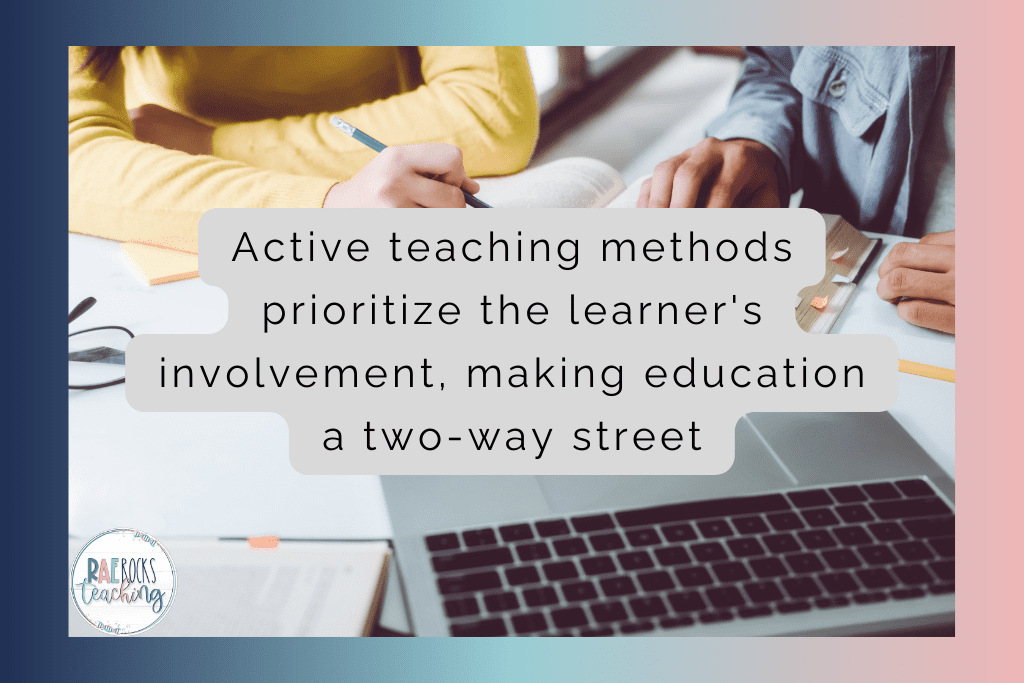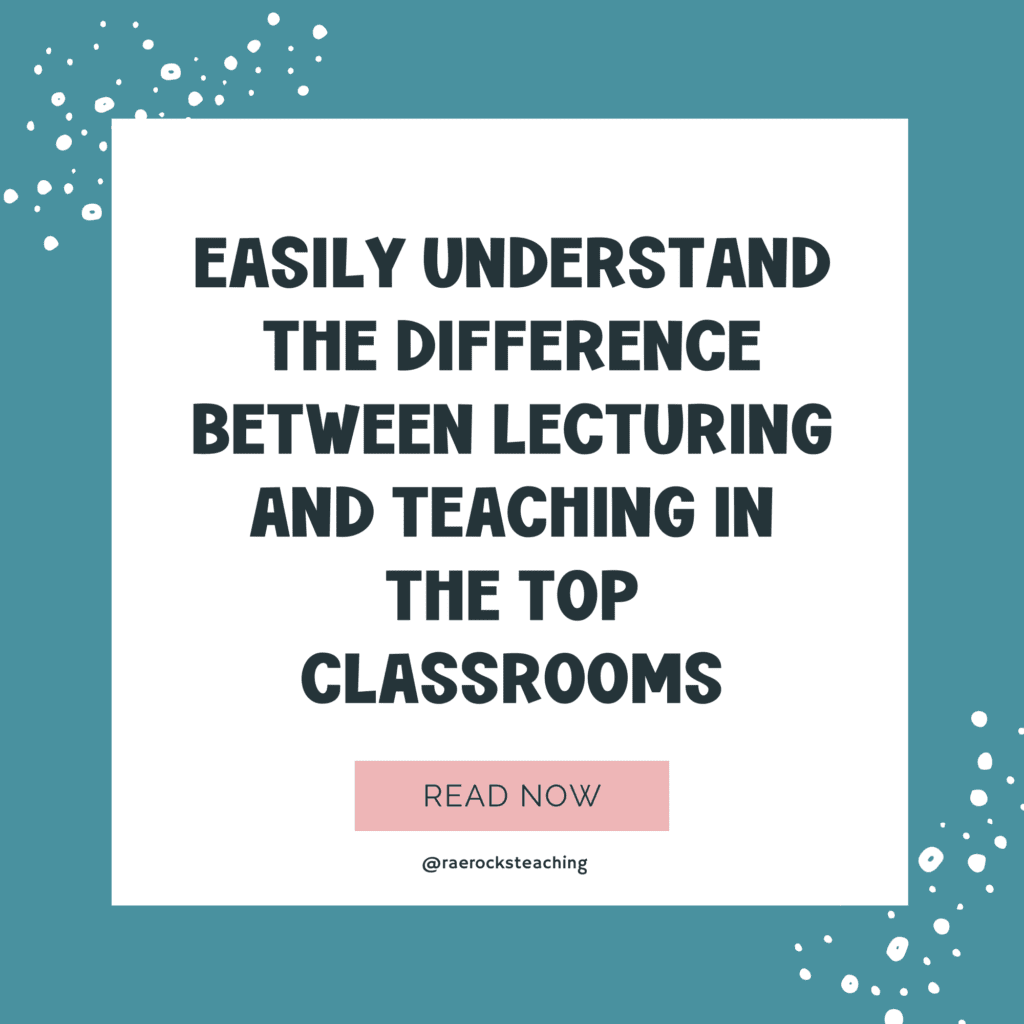In the changing landscape of education, the difference between lecturing and teaching has become a focal point for a shift towards more engaging and effective learning environments. This shift acknowledges that the traditional lecture method may not meet the needs of today’s learners. As we delve into the differences of lecturing versus teaching, it becomes clear that the future of education lies in creating interactive and student-centered classrooms.
Looking for more ways to engage your lessons in class?
Traditional Lecturing vs. Active Teaching Methods
The traditional lecture-style teaching method is characterized by a teacher delivering information to students who passively receive it. This one-way flow of information often results in students becoming mere spectators of their own learning. In contrast, active teaching methods engage students as participants in their learning process. This approach encourages interaction, critical thinking, and hands-on learning, which are vital for students to thrive in the modern world. This is one reason I am so passionate about the In-Class Flipped method because it addresses these concerns.
The main difference between lecturing and teaching lies in the level of engagement and interaction within the classroom. Active teaching methods prioritize the learner’s involvement, making education a two-way street where students and teachers collaboratively explore and construct knowledge. This not only makes learning more enjoyable but also significantly enhances the retention and understanding of complex concepts.

-
Save
The Importance of Student Engagement in the Classroom
Engagement is the cornerstone of effective learning. When students are actively engaged, they are more likely to be motivated, attentive, and invested in their education (It’s a win-win!). This engagement develops a deeper connection to the material, leading to enhanced critical thinking skills and a better understanding of the subject matter.
The difference between lecturing and teaching becomes most apparent when we consider the impact on student engagement. Lectures often lead to passive learning, where students may listen without truly absorbing or interacting with the material, such as sleeping and/or scrolling TikTok. On the other hand, teaching that emphasizes engagement transforms the classroom into a vibrant community of learners, where students are encouraged to question, discuss, and apply their knowledge.

-
Save
Strategies for Creating Engagement through Teaching
Embracing a teaching-focused approach requires innovative strategies that promote active participation and engagement. Some effective methods include:
– Interactive Discussions: Replace some lectures with guided discussions, encouraging students to share their thoughts and ideas. This promotes critical thinking and allows students to learn from each other.
– Collaborative Projects: Group projects develop teamwork and communication skills, enabling students to tackle complex problems together.
– Hands-on Activities: Incorporating practical activities related to the lesson helps students connect theoretical knowledge to real-world applications.
– Technology Integration: Utilizing educational technology can create more interactive and personalized learning experiences, catering to various learning styles and preferences.
These strategies highlight the difference between lecturing and teaching, emphasizing the role of the teacher as a facilitator of learning rather than just a transmitter of information.

-
Save
The Transformative Power of Teaching
The shift from lecturing to teaching has the potential to transform the educational experience for both students and teachers. By focusing on teaching methods that engage and involve students, we as teachers can create a learning environment that is not only more effective but also more enjoyable.
Teaching methods that prioritize student engagement can lead to a more dynamic classroom atmosphere where students feel valued and empowered. The transition towards more engaging teaching practices supports the development of essential skills for the 21st century, such as critical thinking, collaboration, and creativity. These skills are crucial for success in a rapidly changing global landscape, making the difference between lecturing and teaching more relevant than ever.
Understanding the difference between lecturing and teaching is key to unlocking the full potential of modern education. As we teachers embrace teaching methods that prioritize engagement and active learning, our students will become empowered to become active participants in their educational journey. This shift not only enhances the learning experience but also prepares students for the challenges and opportunities of the future.
Don’t forget to Sign up for the FREE GUIDE | Flip & Thrive: Your 5-Step Quickstart Guide to a More Engaging Classroom

-
Save
I love sharing helpful content with y’all and would love to connect on IG or Facebook. I’m on TikTok too! Follow me and send me a DM with what you need more of because I’m here to help! If you are looking for even more inspiration, find me on Pinterest!
Share via:








